Date: August 3, 2019
Venue: Sri Aurobindo Society, Puducherry
A special lecture by Prof. K. Ramasubramanian was organised on August 3, 2019.
The event opened with a brief welcome address by Dr. Sampadananda Mishra who also introduced the speaker. Prof. Ramasubramanian is Professor at IIT Bombay in the Cell for Indian Science and Technology in Sanskrit, Department of Humanities and Social Sciences. He holds a doctorate in Theoretical Physics, a Bachelors in Engineering, and a Masters in Sanskrit, and is world renowned for his work in the area of bringing to limelight some of the seminal contributions of ancient Indian mathematicians and astronomers.
In 2008, he was conferred the prestigious award of Maharshi Badarayan Vyas Samman by the President of India in recognition of his scholarship as well as the outstanding research work done by him to the process of synergy between modernity and tradition.
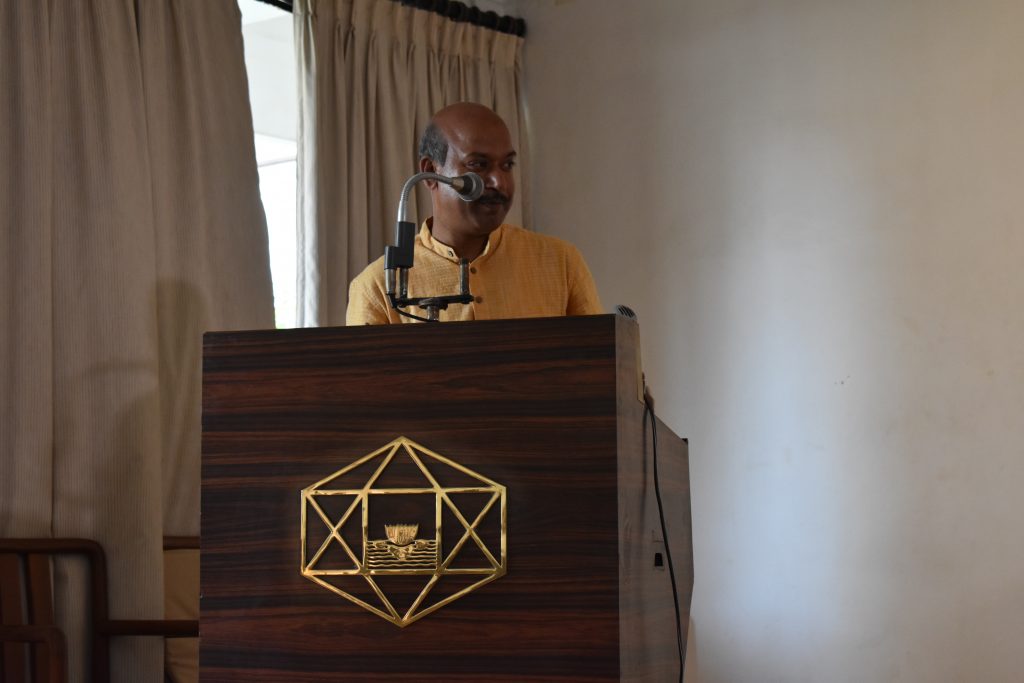
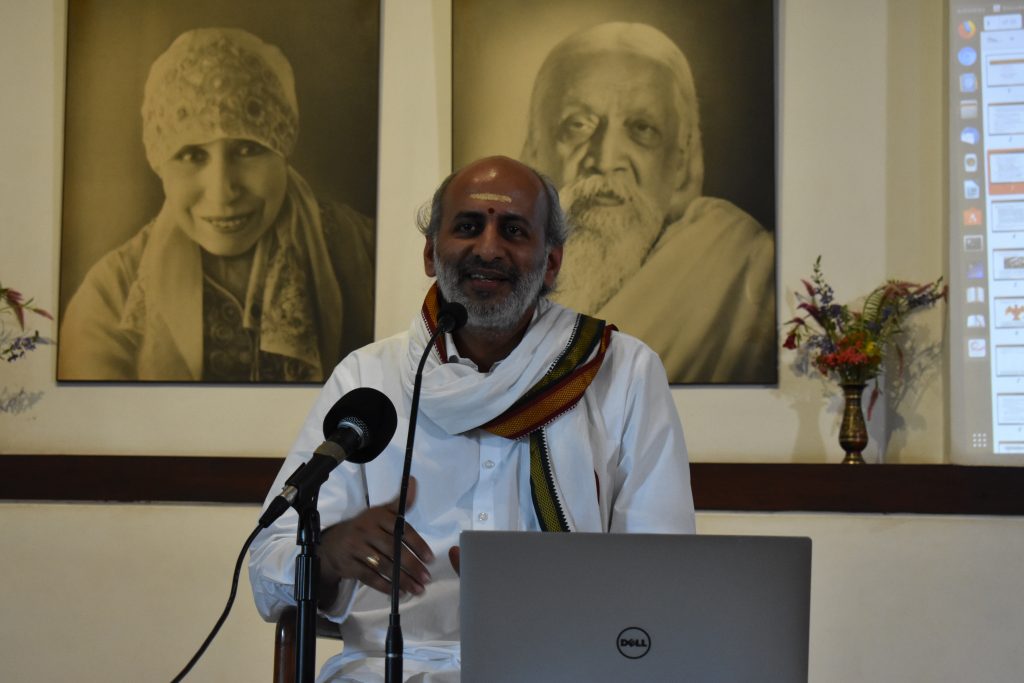
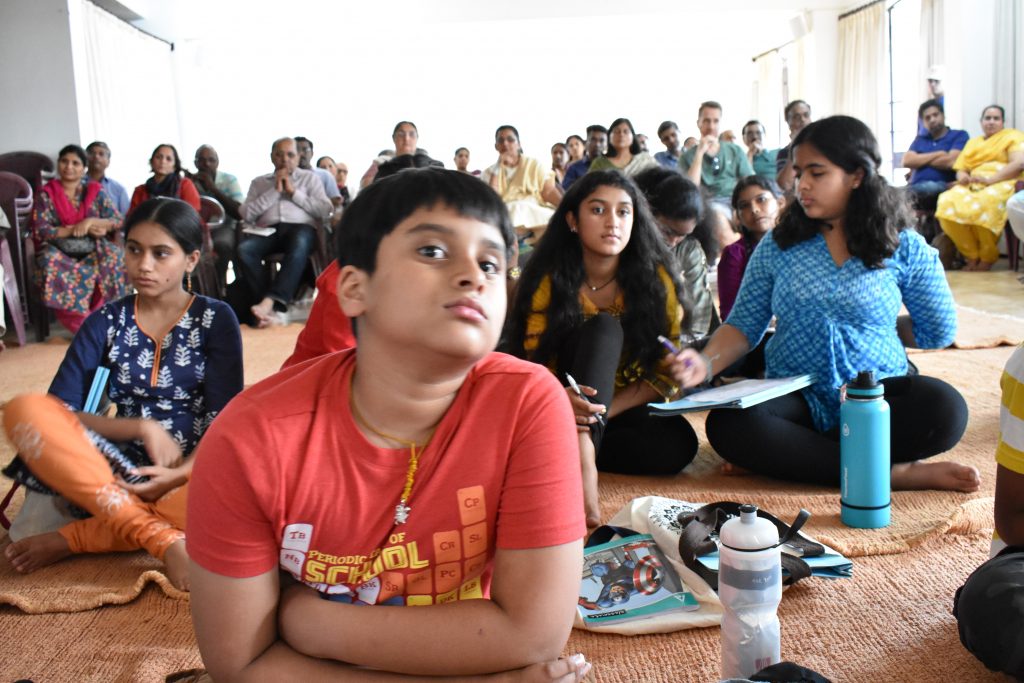
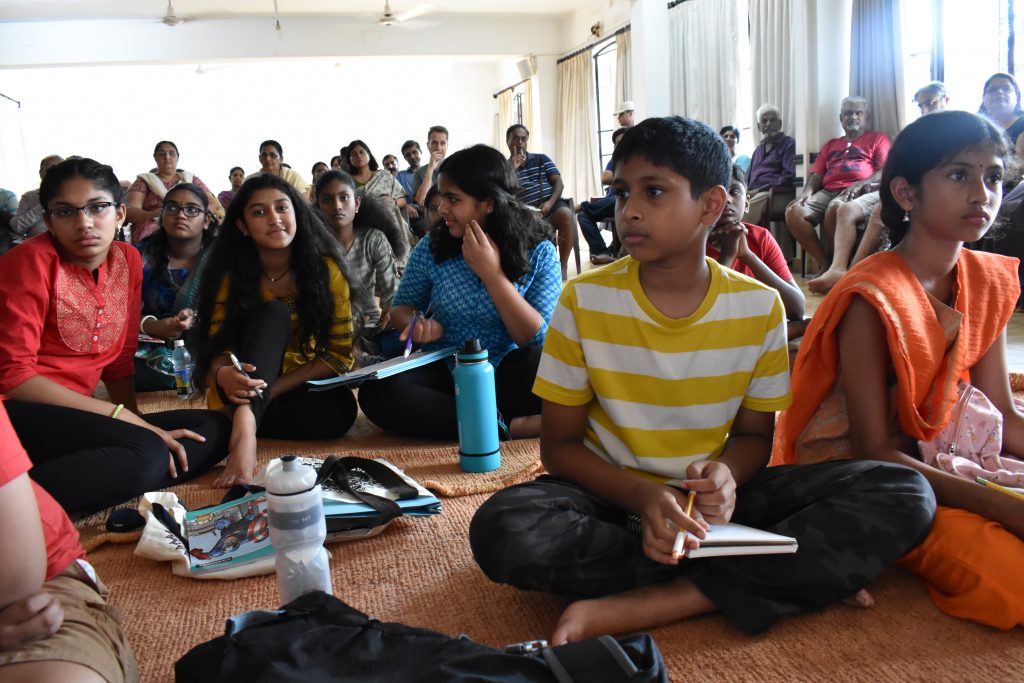
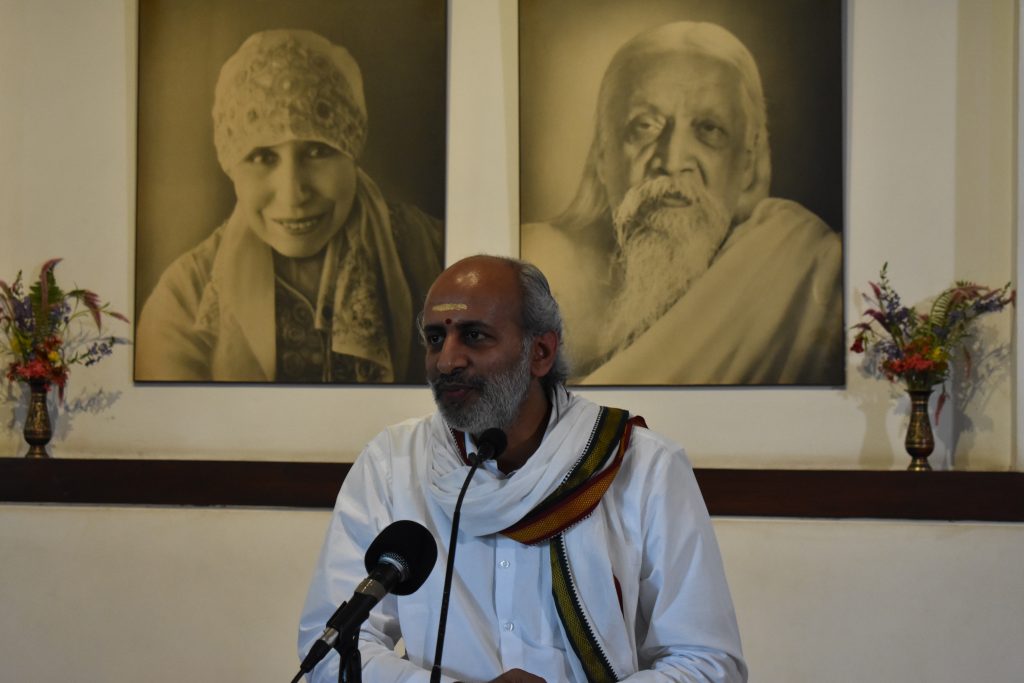
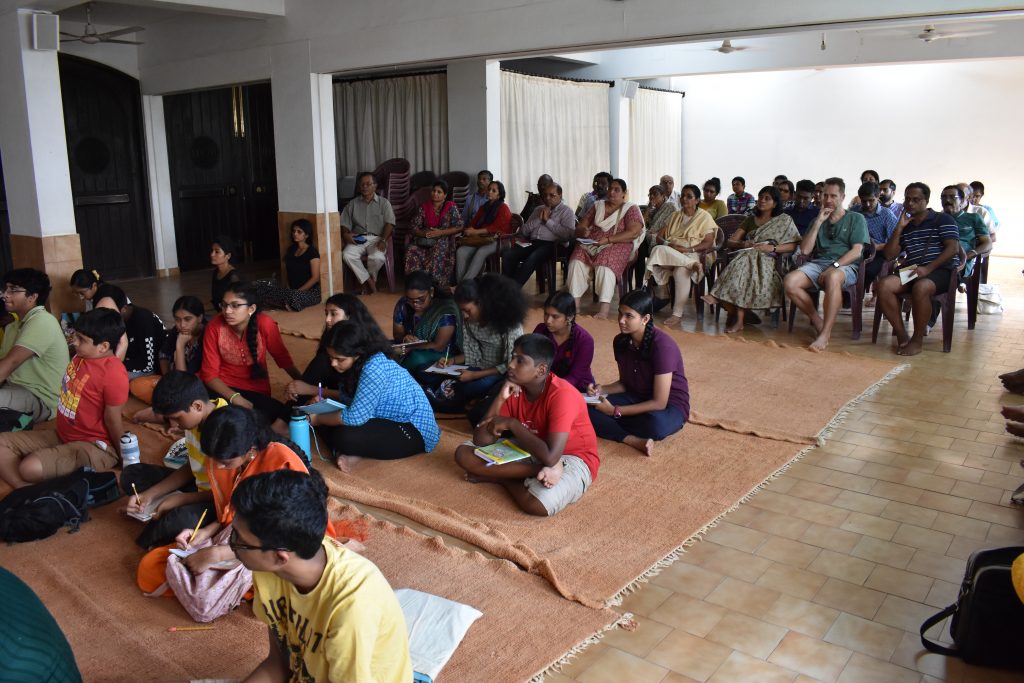
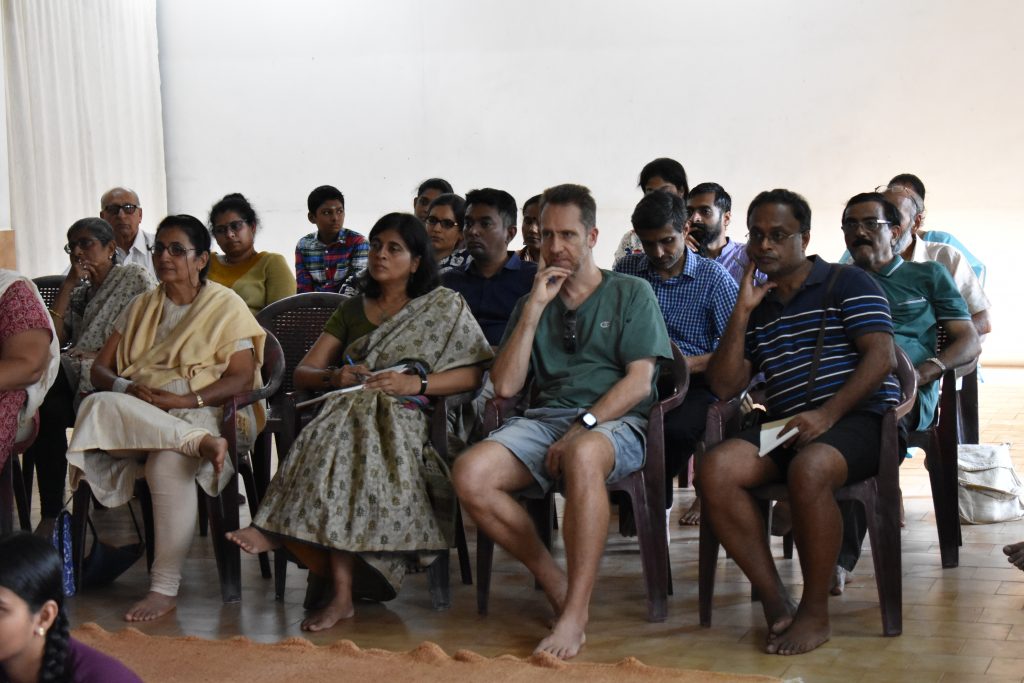
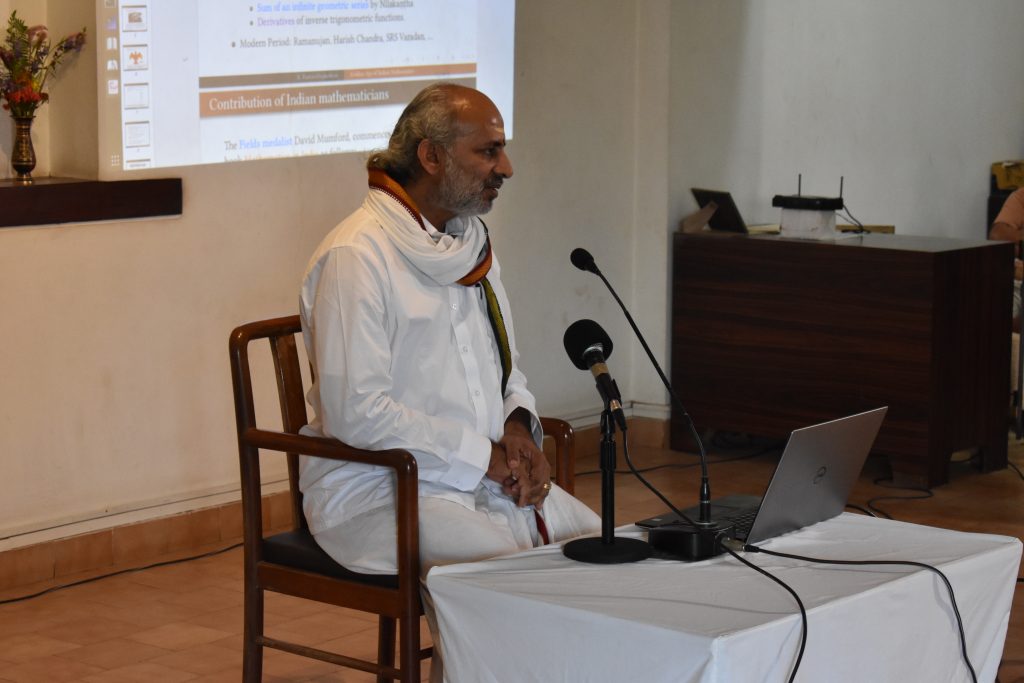
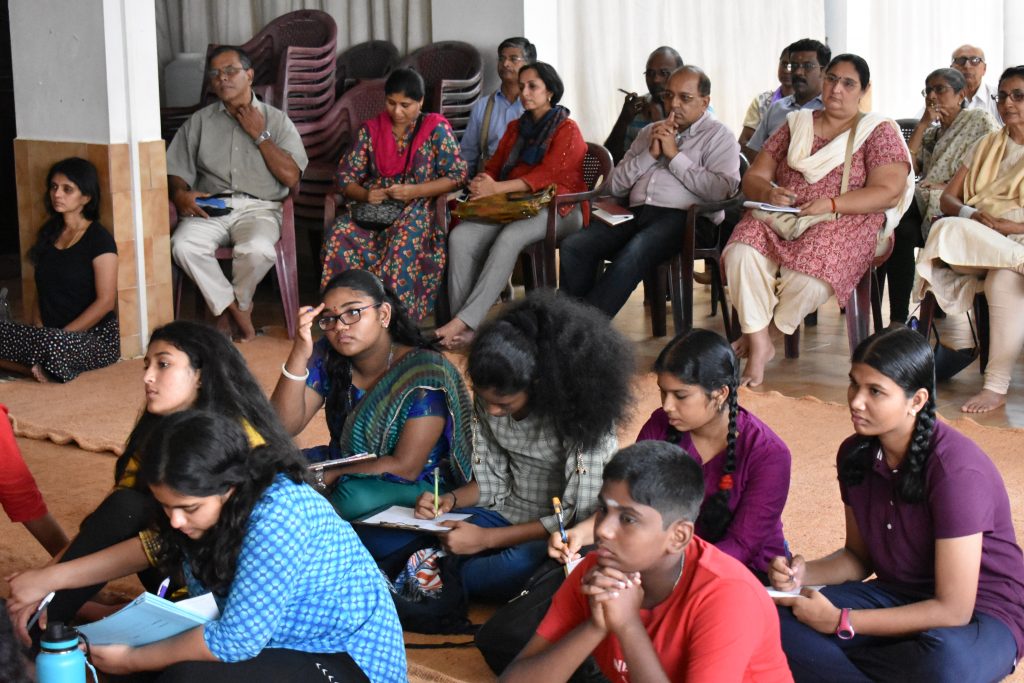
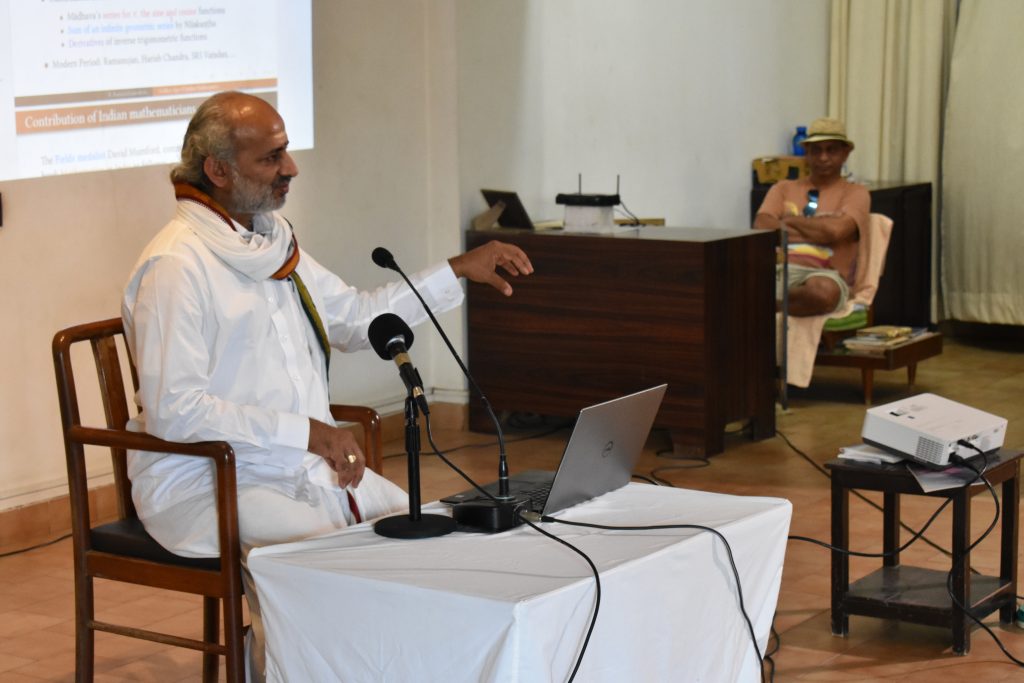
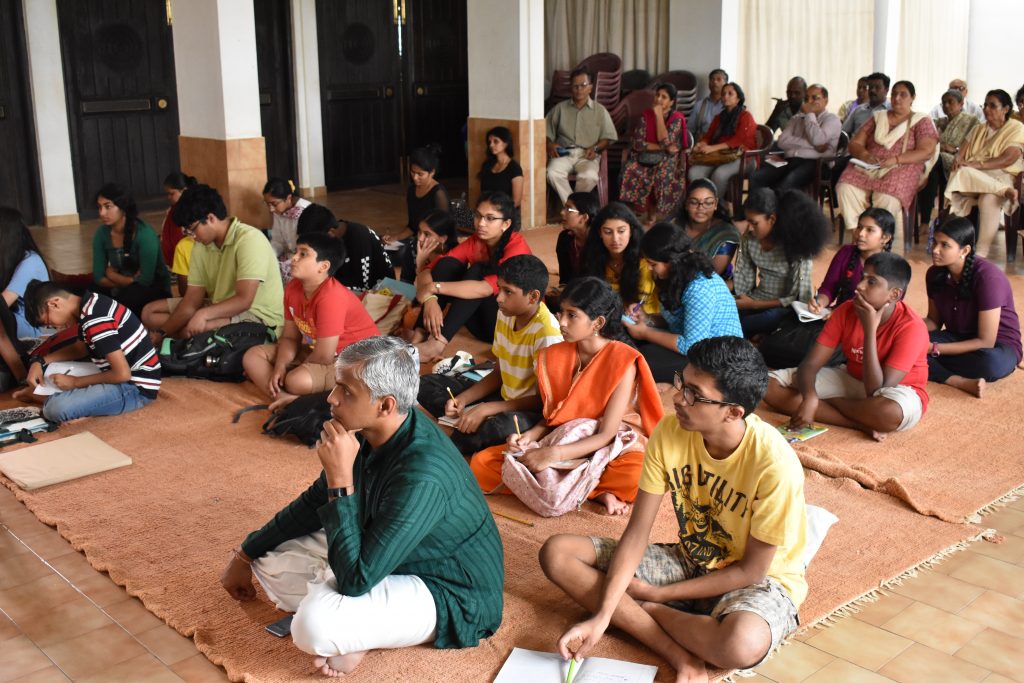
In his lecture titled “Golden Age of Indian Mathematics,” Prof. Ramasubramanian said that we can roughly classify the contributions of Indian mathematics in three time periods – the ancient period before 500 BCE, the classical period from 500 BCE to 1300 CE, and the mediaeval period from 1300 to 1750 CE. He listed a few key figures and works from these time periods.
He briefly spoke about the astronomical connections with the ancient mathematical discoveries in India. And also showed pictures through his presentation of how mathematics in India evolved as an organic necessity for the intricate and precise calculations needed for designing the vedic altar for yajña. He also mentioned the connections between mathematics in India and poetic meters or chandas, and added that the first reference to shunya (zero of the decimal system, which is an important contribution of Indian mathematics) is found in Pingala’s Chandashastra.
The lecture was attended by a large number of school children – including some from the various parts of the USA who were attending a special residential study camp at the Sri Aurobindo Society campus (UNMEṢA), and others from some of the local schools in Pondicherry. At various points in his presentation Prof. Ramasubramanian affectionately engaged this younger audience by asking simple questions pertaining to some of what he was presenting.
Prof. Ramasubramanian highlighted some of the key contributions of Indian mathematicians such as the methods to solve indeterminate equations of II order, and said that to this day the methods used by Indian mathematicians remain the most sophisticated and remarkable.
He highlighted the contributions of Kerala school of mathematicians in the mediaeval period, most prominent name from that period being Madhava. Several children and the adults in the audience were familiar with this name, and also with that of Bhaskara and his famous work Lilavati. Prof. Ramasburamanian showed the audience a couple of examples of problems from Lilavati and encouraged the audience to work through these problems. He also gave another interesting example of construction of magic squares, a problem found in a 14th century text by Narayan Pandita; many children found this quite intriguing.
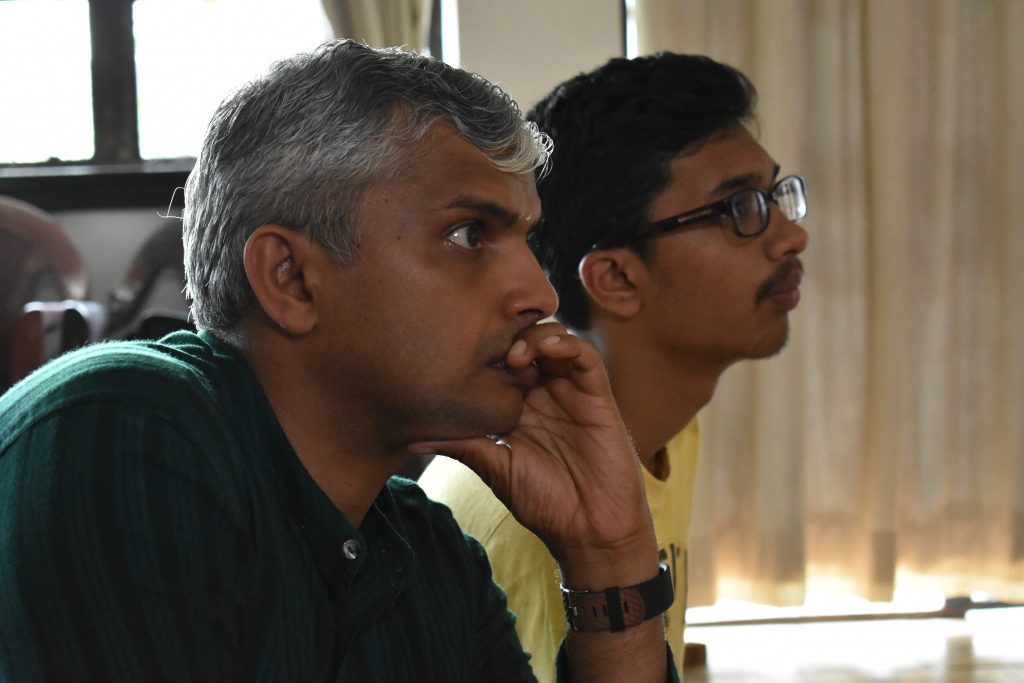
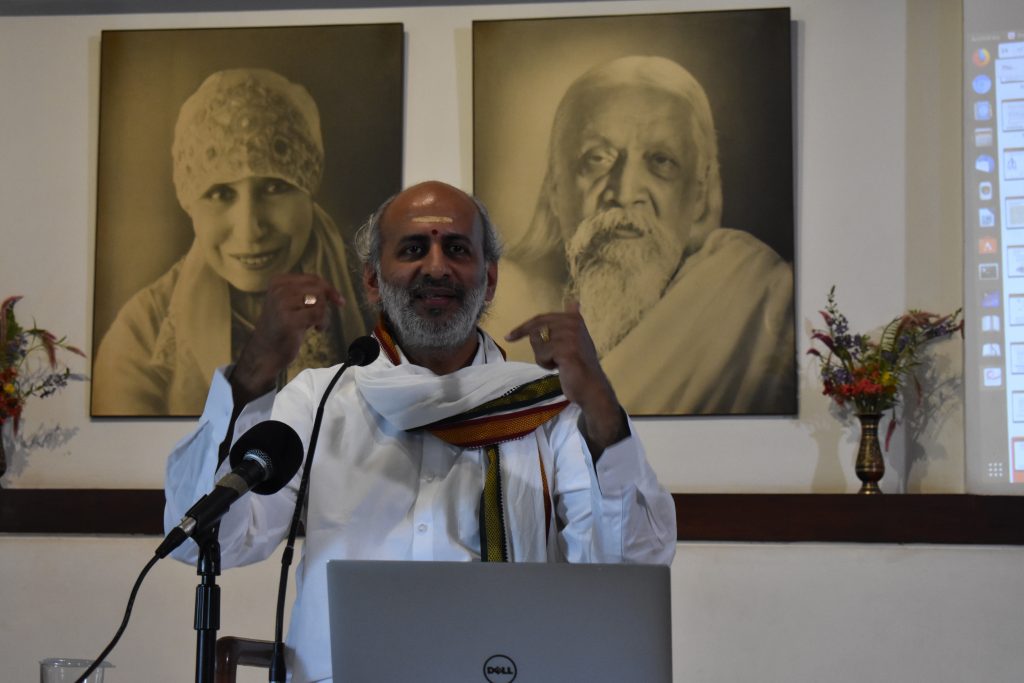
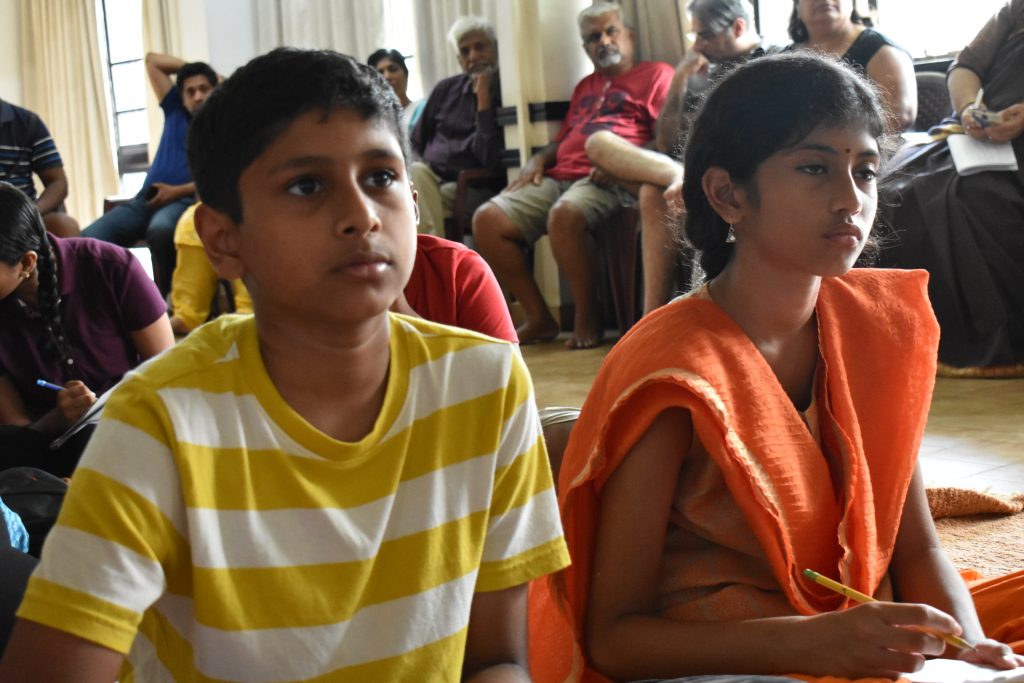
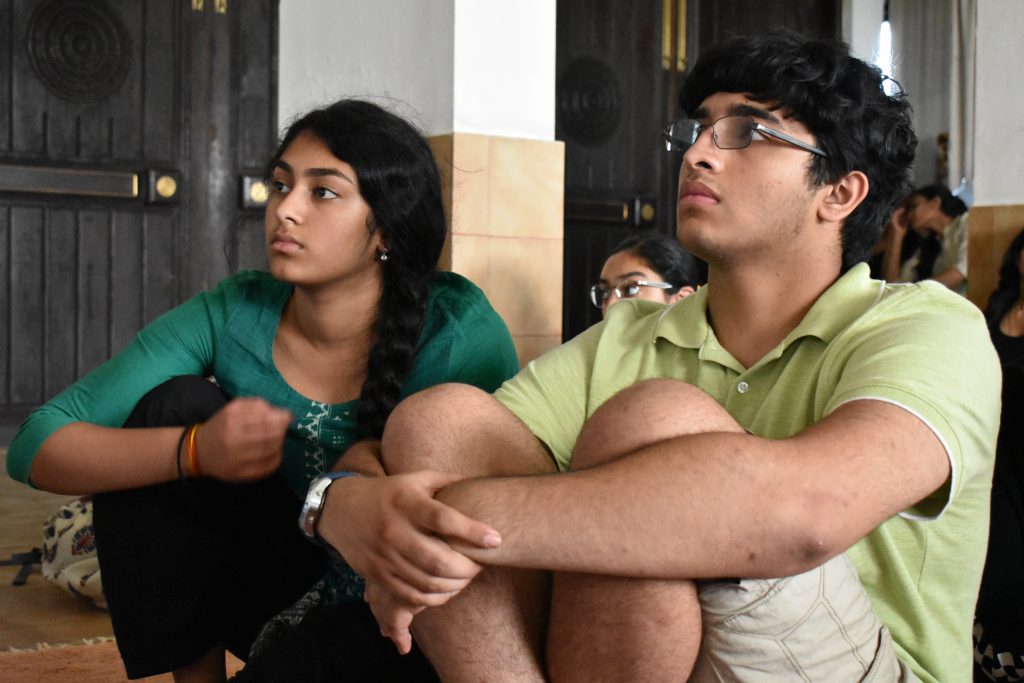
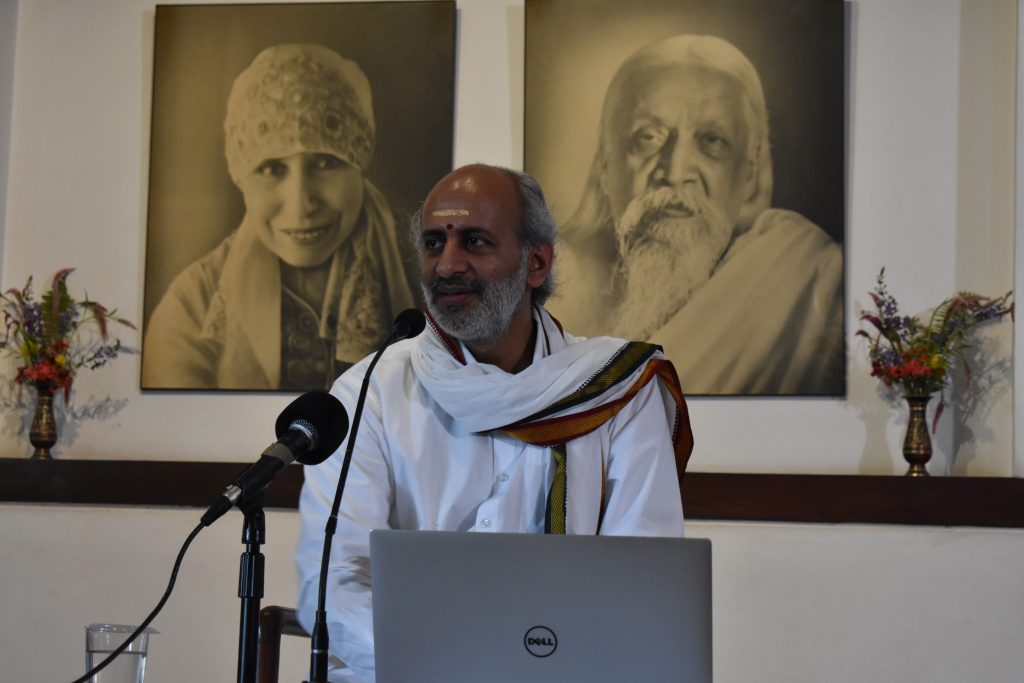
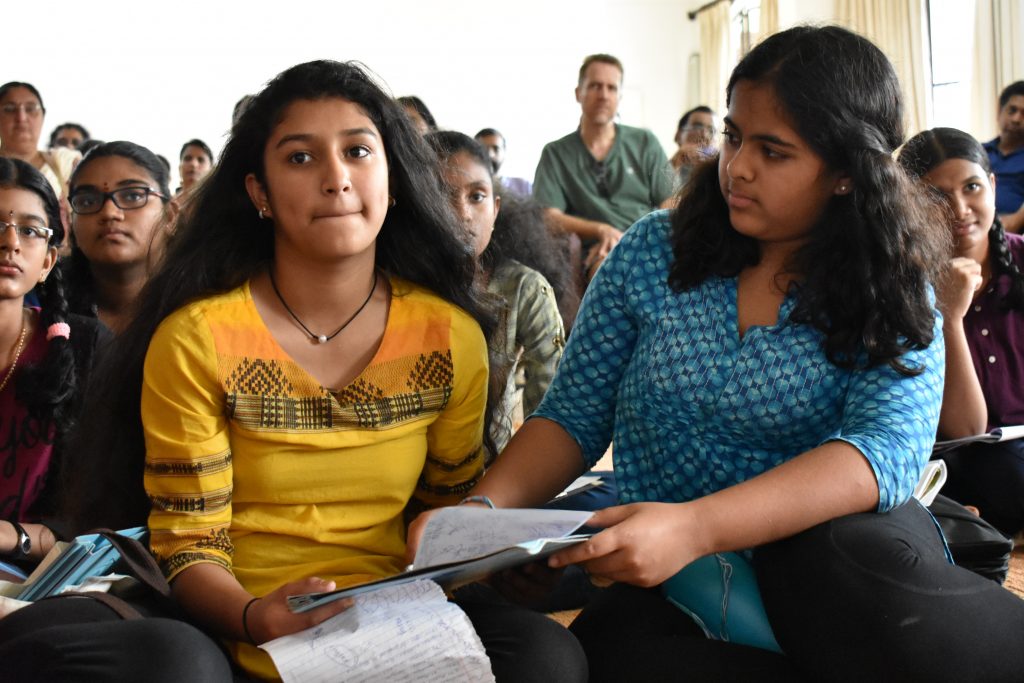
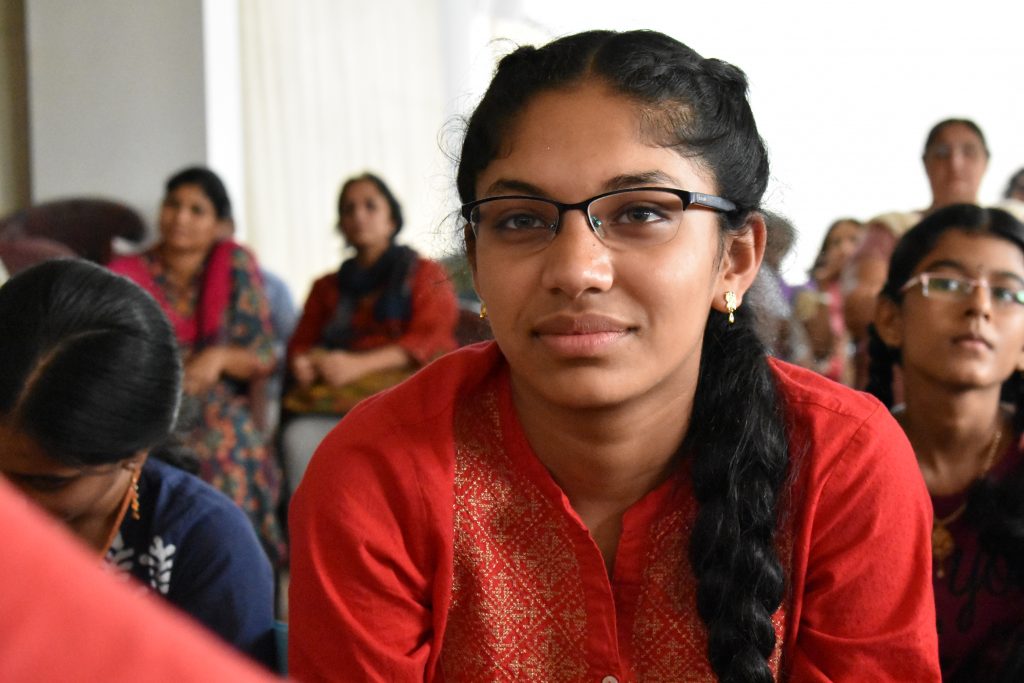
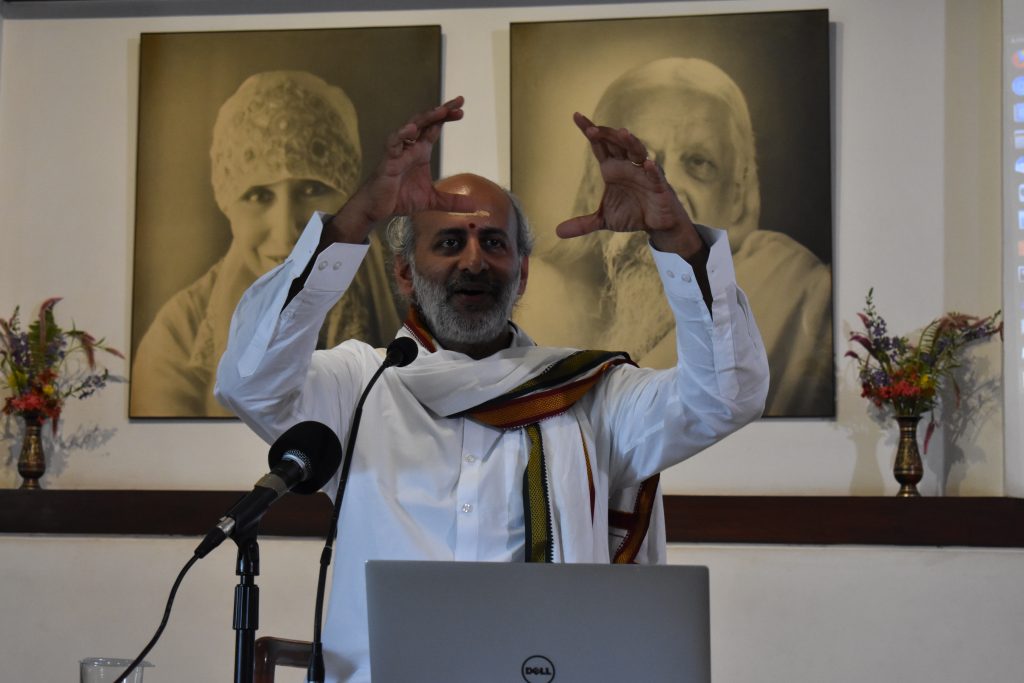
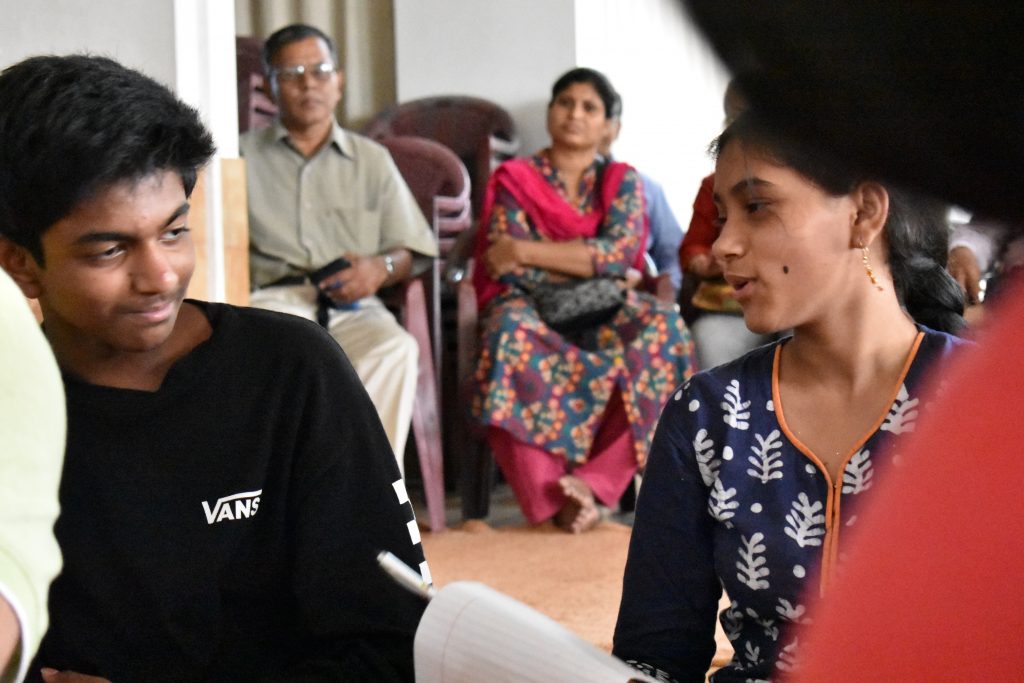
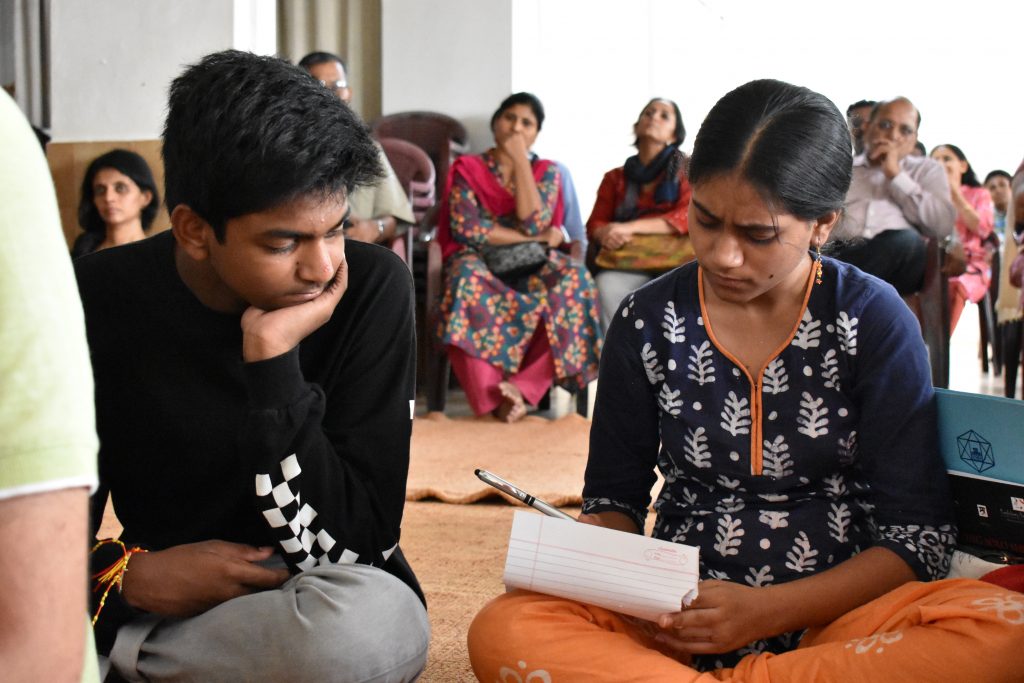
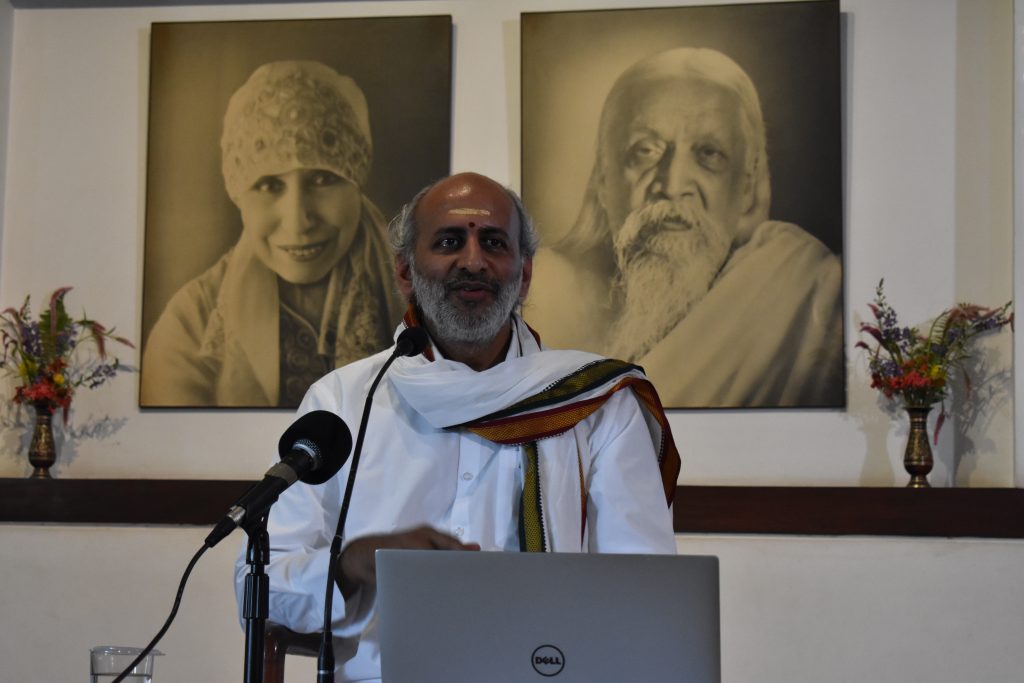
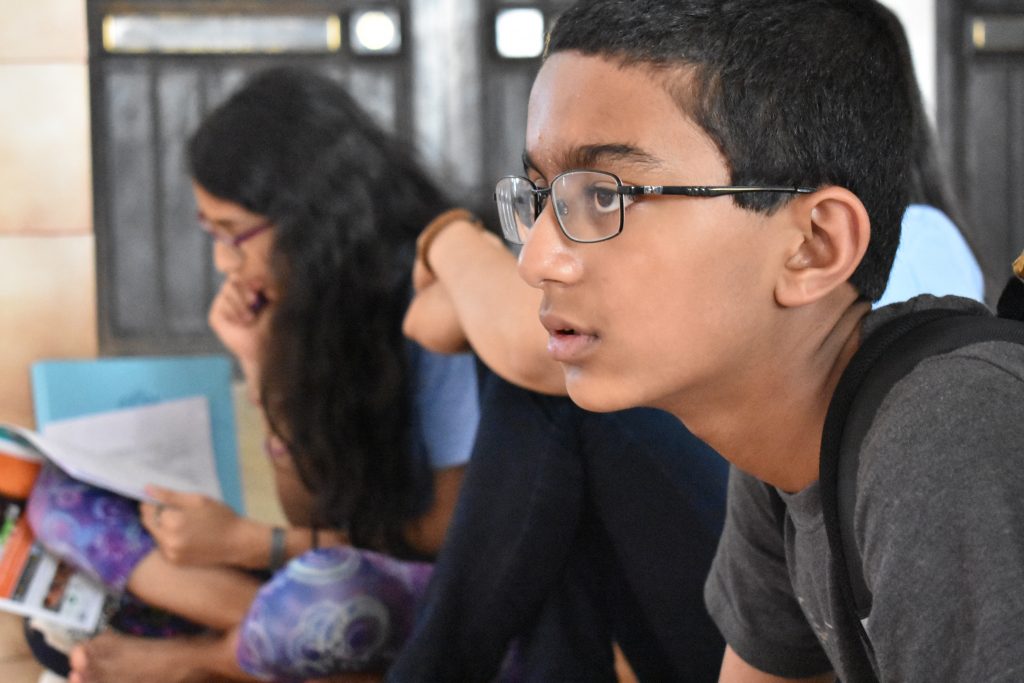
Towards the end of his lecture, Prof. Ramasubramanian shared comments by some of the leading scientists and mathematicians of recent times which bring to light the remarkable work done by the ancient Indian mathematicians. He concluded with a few general but highly significant remarks about some key lessons that can be learned by studying the works and approaches of ancient Indian mathematics. These lessons concern how to make mathematics education approachable and interesting for all, and how to connect mathematical learning with facilitating overall creativity in the learners. These are generally ignored in the way mathematics is taught in the modern education systems.
The lecture was followed by a few questions from the audience, which Prof. addressed. The event concluded with a vote of thanks by Dr. Beloo Mehra.
